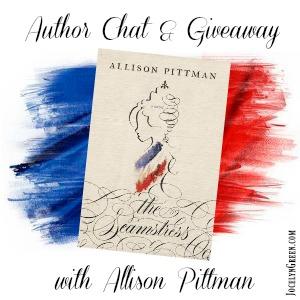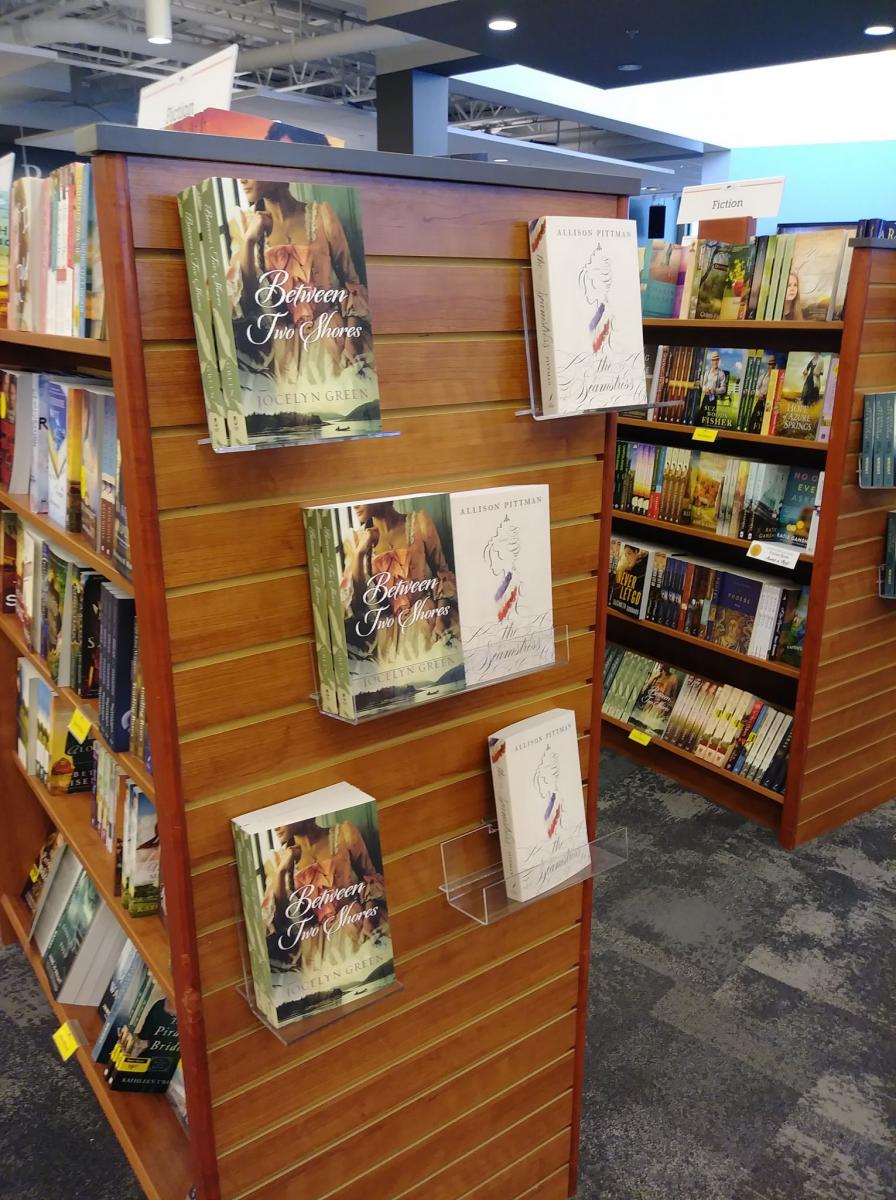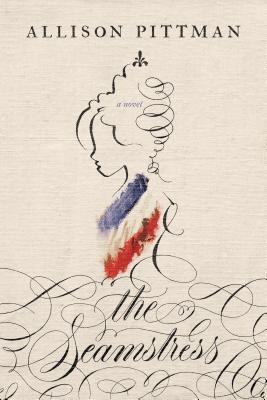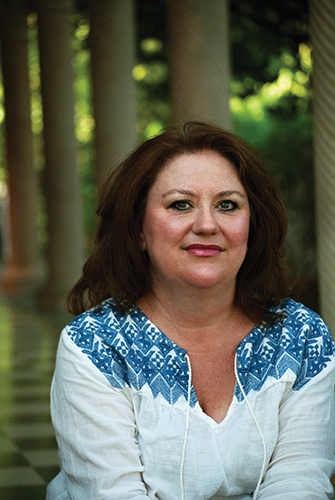
Between Two Shores shares a Feb. 5 release day with several other excellent historical novels! One of them is The Seamstress by Allison Pittman, which I was honored to endorse. Here's the blurb for the novel:
A beautifully crafted story breathes life into the cameo character from the classic novel A Tale of Two Cities.
France, 1788
It is the best of times . . .On a tranquil farm nestled in the French countryside, two orphaned cousins―Renée and Laurette―have been raised under the caring guardianship of young Émile Gagnon, the last of a once-prosperous family. No longer starving girls, Laurette and Renée now spend days tending Gagnon's sheep, and nights in their cozy loft, whispering secrets and dreams in this time of waning innocence and peace.
It is the worst of times . . .
Paris groans with a restlessness that can no longer be contained within its city streets. Hunger and hatred fuel her people. Violence seeps into the ornate halls of Versailles. Even Gagnon’s table in the quiet village of Mouton Blanc bears witness to the rumbles of rebellion, where Marcel Moreau embodies its voice and heart.
It is the story that has never been told.
In one night, the best and worst of fate collide. A chance encounter with a fashionable woman will bring Renée’s sewing skills to light and secure a place in the court of Queen Marie Antoinette. An act of reckless passion will throw Laurette into the arms of the increasingly militant Marcel. And Gagnon, steadfast in his faith in God and country, can only watch as those he loves march straight into the heart of the revolution.

And here's what I had to say about it:
Destined to be a classic in its own right, The Seamstress is everything I love about historical fiction. The robust characters not only interact with real and pivotal events, but they embody the attitudes of the day in ways that are accessible for the modern reader. Pitman’s power of language drew me deep into revolutionary France, and her accurate and sensitive portrayal of the turmoil earned my undying respect. The Seamstress is an intricate tapestry hemmed in truth and grace. A masterpiece.
I am so blown away by this book! It's going to go on my keeper shelf, in hardcover. I can't wait to read it again. Some of my enthusiasm stems from my own interest in the French Revolution, which was the launching pad for my book that released last year, A Refuge Assured. But if you love historical fiction at all, you'll devour this book.
Now on to the chat with Allison!
The Seamstress reveals the untold story of a cameo character in Charles Dickens' novel, A Tale of Two Cities. What inspired you to elaborate on the life of this character in particular?
Allison: At the end of the novel A Tale of Two Cities, the character Sydney Carton has this beautiful, sweet moment with a young seamstress (Dickens describes her as a “little seamstress.” It’s a moment meant to show the redemption of Sydney Carton, a man who sees himself as one who has wasted his life. The seamstress herself is nameless, appearing only in the final pages of the novel. Even so, left to herself, she is a powerful, important character. But—she mentions having a cousin in the country. That little detail used to seem like a throw-away fact. Then I became a writer, and I learned that nothing is a throw-away fact. Why mention the cousin? The seamstress is a symbol! A metaphor! She doesn’t need a cousin! I was standing in front of the students in my sophomore English class, discussing this final scene, and I had a throw-away line of my own: “I should write that story.”
Ha! I’m so glad you did! I have read a lot of fiction and nonfiction related to the French Revolution, since that was the foundation and launching point for my novel A Refuge Assured, and The Seamstress is my absolute favorite. I thought you handled all the various aspects –historical, psychological, and otherwise—masterfully. And I was especially thrilled to see how the French Revolution affected the people in the country, since most literature focuses on the cities, especially Paris. Obviously, we can’t write about the revolution without writing about Paris, but France was and is much bigger than that. I really appreciated your illuminating another aspect through those characters in the country!
Can you tell us about the research that went into writing this novel?
Well, I wish I could say it included a week-long visit to Paris and Versailles, but remember—the idea came to me while teaching an English class, so a research trip just wasn’t in the budget. I focused my research on 4 touchpoints: the Dickens novel to line up my story events with that final scene; a biography of Marie Antoinette to look for character insight beyond the cultural cliché; a fantastic book about the design, architecture, and history of the palace at Versailles; and a resource offering meticulous detail about the fashion of the time.While I, of course, read widely for details of the history of the French revolution, I paid close attention to the details of the revolution as filtered through those sources and points of view. I always hope that the history behind my stories will come to life through my story. So I tried to take bits and pieces of the conditions that led France to this point of revolution and “assign” them to characters to carry them to life.
Your research shows! I adored all the details! It was all so convincing and immersive, it really took my breath away.
Tell us about some of the core themes explored in your book. How do you hope readers might relate these themes to their own lives and real-world experiences?
 I think, after sifting through the layers of the parallel stories, the core theme comes down to two concepts: honor and grace. In the story’s first pages, Gagnon acts with honor, taking in the orphaned cousins; moreover, he is honorable in every moment they are in his care, even when they grow from being little girls into young women. He guards and shields them, honoring God in every moment, even when that moment means letting them go. Renee honors her country’s queen, even when popular opinion dictates such respect is not deserved. And Laurette, in her darkest moment, honors what she knows to be good and right. Even the rebel Marcel acts in a manner that he sees as honorable, ready to fight and die for those who cannot do so for themselves.
I think, after sifting through the layers of the parallel stories, the core theme comes down to two concepts: honor and grace. In the story’s first pages, Gagnon acts with honor, taking in the orphaned cousins; moreover, he is honorable in every moment they are in his care, even when they grow from being little girls into young women. He guards and shields them, honoring God in every moment, even when that moment means letting them go. Renee honors her country’s queen, even when popular opinion dictates such respect is not deserved. And Laurette, in her darkest moment, honors what she knows to be good and right. Even the rebel Marcel acts in a manner that he sees as honorable, ready to fight and die for those who cannot do so for themselves.
All of your characters were drawn so exquisitely. I must say, Gagnon totally stole my heart with his quiet honor, and his perspective on the revolution and how that interacted with his faith.
What is the value of fiction and storytelling in today’s society?
Fiction gives us a chance to explore. I don’t mean just learning about cities and history, but it gives us a chance to explore mindsets and points of view. In The Seamstress readers get to see not only the unfolding of a revolution, but the desperation and poverty that led to that violence and destruction. Fiction allows us to empathize with the kinds of people we might never meet in real life. I think sometimes we feel safer letting a fictional character into our heart, because it’s a safe way to explore new emotions. We can make predictions and lose nothing if we’re wrong. People like to think of fiction as an escape, but I prefer to see it and create it as an immersion.
Yes! I totally agree. Fiction can be escape, but I like it best when it’s an immersion, which is what I’ve found in all of your novels that I’ve read. I also think of fiction as rehearsal. We get to imagine ourselves in situations and wonder, “what would I do if I were in this character’s position?” None of us are going to experience the French Revolution, but we may experience times of turmoil when our allegiances and loyalties are tested. We may come to a crossroads that requires us to make some difficult decisions.
What role does faith play in this story?
Both Laurette and Renee were raised with an ever-present sense of religion in a staunchly Catholic village. Neither girl, however, in her simple, pastoral life, ever sought anything deeper than ritualistic practice—Laurette, not even that. Their prayers are memorized and recited, with a concept of God as a looming, far-off presence. Though their paths are markedly different, each has to come to a place where she needs to trust in the forgiveness of Christ in order to forgive her own choices. Faith is what allows us to live with ourselves.
Oh wow, that is a really interesting way to phrase that. I appreciated how you were true to what their religious background and experience would have been. Watching them grow was very meaningful.
Which scene in The Seamstress did you most enjoy writing?
Oh, my…even though it is tragic and violent,I think it has to be the scene of the women storming the palace at Versailles. For one thing, as a not-so-secret feminist, it’s somewhat satisfying to see women taking action in their own hands. There’s something so powerful about the idea of women made bold for the sake of their children—to see them add weapons to their voices and confront subjugation with threat. I could never advocate that in today’s climate, but in the context of history, it is such a powerful moment. That scene is also a perfectly crafted chapter in the Dickens novel, with the sinister Madame Defarge at the helm. And finally, though I won’t go into detail exactly how, it brings the cousins Laurette and Renee within consciousness of each other, and as a writer, those little moments are so much fun to craft!
I was very glad to see that powerful historical scene represented in your novel! What really struck me about the French Revolution is the role that women did play. They didn’t just sit idly by, leaving politics to the men, so to speak. They were active participants on many levels, which for the late 1700s, was even more remarkable.
 Thank you Allison, for being with us today!
Thank you Allison, for being with us today!
About Allison
Allison Pittman, author of more than a dozen critically acclaimed novels, is a three-time Christy finalist—twice for her Sister Wife series and once for All for a Story from her take on the Roaring Twenties. She lives in San Antonio, Texas, blissfully sharing an empty nest with her husband, Mike. Please visit her website, www.allisonkpittman.com.
Give-away
UPDATE: The give-away is now closed. Thank you to all who entered! Congratulations to Cheryl Barker, the winner selected at random using random.org.
To be entered into a drawing for a copy of The Seamstress, please leave a comment below. Tell us one thing you thought was interesting from this author chat! (Keep in mind all comments await moderation, so if it doesn't show up, don't worry, I'll approve it soon.) A winner will be selected at random on Feb. 15.
By the way, Allison interviewed me on her blog, too, and from there I will give away a copy of Between Two Shores! Click here for that post.
Buy the Book
Ready to purchase The Seamstress? Find it at your local bookstore, Baker Book House, Amazon, Barnes and Noble, ChristianBook, or any of your other favorite online retailers.


Comments
I love that the author
There's a man in my weekly
Pages
Add new comment